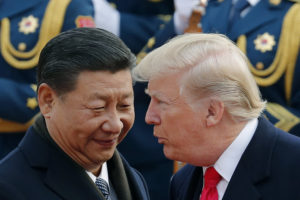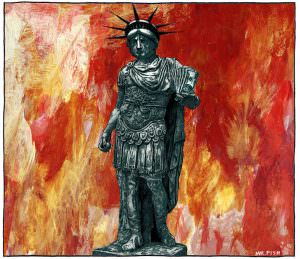The Secret of Modern Monetary Theory
Leaving the gold standard in 1971 meant the U.S. was free to manage its money supply to prevent deflation and "truly damaging levels of inflation." But mainstream economists, led by the free-market Chicago School, have ignored this fact, leaving the public's fate to the caprices of markets for decades.
Leaving the gold standard in 1971 meant the U.S. was free to manage its money supply to prevent deflation and “truly damaging levels of inflation.” But mainstream economists, led by the free-market Chicago School, have ignored this fact, leaving the public’s fate to the caprices of markets for decades.
Essentially, granting the government greater control over how much money flows through a society gives it another means to adjust the whole economic machine to avoid overheating or breaking down. It is a tool that can be used to promote growth and eliminate unemployment, which has ruined or seriously degraded the lives of tens of millions of Americans.
As hard as it is for non-experts to believe, the models employed by mainstream economists “do not even try to account for money, banking or debt,” Dale Pierce writes on New Economic Perspectives, a website managed by University of Missouri economists who comprise the leading thinkers of Modern Monetary Theory. And “[t]his is one big reason why virtually all members of the economics profession failed to see the housing bubble and were then blind-sided by both the 2008 financial collapse and the grinding, on-going Eurozone crisis which has followed in its wake.”
— Posted by Alexander Reed Kelly.
Your support matters…Dale Pierce at New Economic Perspectives:
The trick is for the government to spend enough to ensure full employment, but not so much, or in such a way, as to cause shortages or bottlenecks in the real economy. These shortages and bottlenecks are the actual cause of most episodes of excessive inflation. If the mere existence of fiat monetary systems caused runaway inflation, the low, stable rates of consumer-price inflation we have seen over the past thirty-plus years would be pretty difficult to explain.
The essential insight of Modern Monetary Theory (or “MMT”) is that sovereign, currency-issuing countries are only constrained by real limits. They are not constrained, and cannot be constrained, by purely financial limits because, as issuers of their respective fiat-currencies, they can never “run out of money.” This doesn’t mean that governments can spend without limit, or overspend without causing inflation, or that government should spend any sum unwisely. What it emphatically does mean is that no such sovereign government can be forced to tolerate mass unemployment because of the state of its finances – no matter what that state happens to be.
Independent journalism is under threat and overshadowed by heavily funded mainstream media.
You can help level the playing field. Become a member.
Your tax-deductible contribution keeps us digging beneath the headlines to give you thought-provoking, investigative reporting and analysis that unearths what's really happening- without compromise.
Give today to support our courageous, independent journalists.



You need to be a supporter to comment.
There are currently no responses to this article.
Be the first to respond.